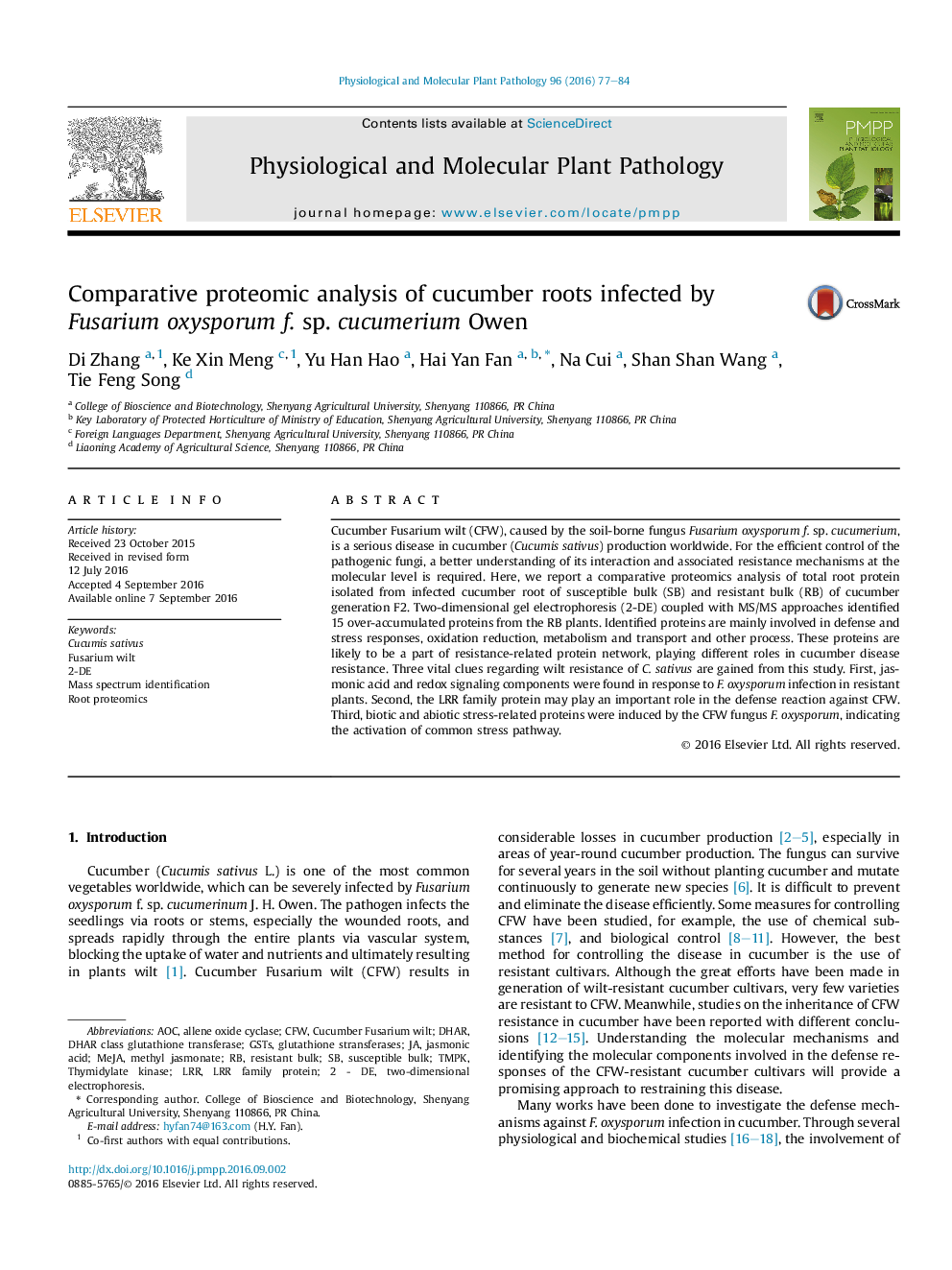| Article ID | Journal | Published Year | Pages | File Type |
|---|---|---|---|---|
| 5921038 | Physiological and Molecular Plant Pathology | 2016 | 8 Pages |
â¢First proteomic work to investigate the defense mechanisms against F. oxysporum infection.â¢15 over-accumulated proteins from resistant bulk of cucumber roots were identified.â¢Three vital clues regarding cucumber fusarium wilt resistance were found.
Cucumber Fusarium wilt (CFW), caused by the soil-borne fungus Fusarium oxysporum f. sp. cucumerium, is a serious disease in cucumber (Cucumis sativus) production worldwide. For the efficient control of the pathogenic fungi, a better understanding of its interaction and associated resistance mechanisms at the molecular level is required. Here, we report a comparative proteomics analysis of total root protein isolated from infected cucumber root of susceptible bulk (SB) and resistant bulk (RB) of cucumber generation F2. Two-dimensional gel electrophoresis (2-DE) coupled with MS/MS approaches identified 15 over-accumulated proteins from the RB plants. Identified proteins are mainly involved in defense and stress responses, oxidation reduction, metabolism and transport and other process. These proteins are likely to be a part of resistance-related protein network, playing different roles in cucumber disease resistance. Three vital clues regarding wilt resistance of C. sativus are gained from this study. First, jasmonic acid and redox signaling components were found in response to F. oxysporum infection in resistant plants. Second, the LRR family protein may play an important role in the defense reaction against CFW. Third, biotic and abiotic stress-related proteins were induced by the CFW fungus F. oxysporum, indicating the activation of common stress pathway.
